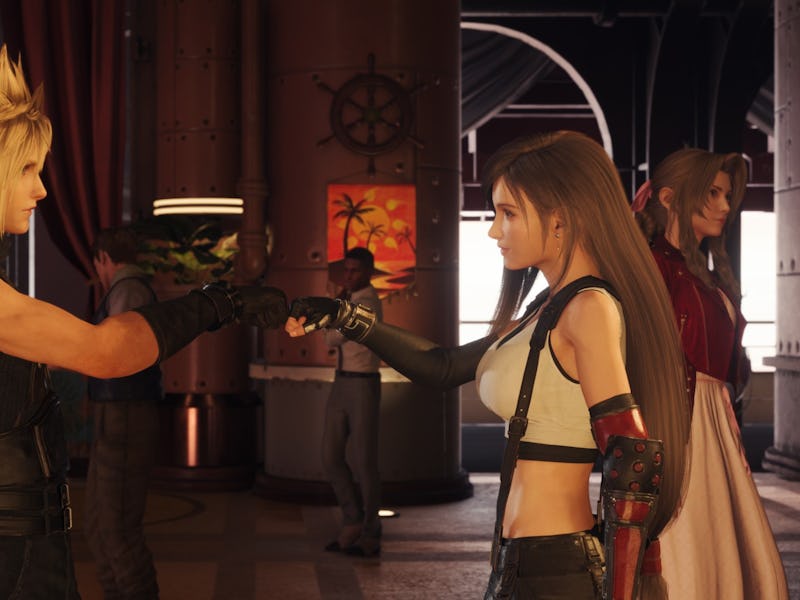FF7 Rebirth's Side Quests Set the Example For Party-Based RPGs
Everyone gets the spotlight.

Final Fantasy 7 Remake did a lot right, but its side quests left a lot to be desired, often feeling like bland distractions that dragged out the otherwise tight pacing. That’s clearly an area that developer Square Enix wanted to work on in Final Fantasy 7 Rebirth. But more than just an improvement, side quests in Rebirth feel innovative. Rebirth’s side quests help embellish its world and setting but crucially provide a unique spin by directly integrating party members. It’s a brilliant design that makes the ensemble cast feel even richer and shows how they fit into the world at large. It’s what I want from every party-based RPG now.
Many of Rebirth’s open world activities can feel like busy work, but by and large, side quests feel like meaningful expansions of the world and story. In interviews, director Naoki Hamaguchi talked about how the team looked at games like Horizon: Zero Dawn and The Witcher 3 as inspiration, and those influences are clear to see.
Rebirth’s side quest often introduce wildly new mechanics and minigames, making them feel nicely varied.
Side quests are doled out whenever you reach a new city, and directly tie into the people and history of those locations. For example, when you reach Junon, you’re given a side quest to help out the mayor with a delivery, which leads to discovering a new settlement and some details on her family. Nearly half of the sidequests in the game also introduce some new gameplay mechanic or minigame, adding a mechanical sense of variety on top of storytelling.
While these elements are clear improvements over Remake’s side quests, Rebirth implements the fascinating idea of tying every side quest to a party member. This provides a secondary piece of storytelling for each quest, focused on Cloud bonding with whatever other character is taking on the question. For example, one quest has Tifa and Cloud helping a bartender find a lost card, while also giving you some cute character interactions between the two as you learn about Tifa’s bartending experience. Another has Yuffie and Cloud helping a lost Wutai agent, giving you a chance to learn more about Wutai itself, and the overwhelming expectations Yuffie faces to do her country proud.
Tying each quest to a party member is an ingenious way of making it feel like every main character matters, outside of their narrative arc. It adds to the sense of Rebirth being a journey, and helps flesh out how these characters see the world itself, not just their relationships with Cloud.
Rebirth side quests stand in stark contrast to Final Fantasy XVI’s, which dragged out the experience with busy work.
It’s a stark contrast to what Final Fantasy has done in the past, even as recently as Final Fantasy XVI, where side quests were one of the weakest elements of the game. In XVI side quests all employ the same structure of either fetch quests or finding a specific enemy to battle, and seldom do they help flesh out the main cast of characters.
Side quests in RPGs too often take the idea of being “side” content too seriously, feeling entirely disparate from the main story and cast of characters. Even the recent release of Like a Dragon: Infinite Wealth, suffered from this problem. In Infinite Wealth each party members has their own selection of side content, but the dozens of substories in the game don’t involve them at all. One second you’re running around with your party, then suddenly it’s just Ichiban experiencing the events of a substory. It’s jarring to see party members not tied into significant sections of the game, especially as the main story focuses so heavily on the “bonds” of its characters.
Side quests don’t only develop Cloud’s relationship with the party, but crucially show how party members interact with the expanded cast and world.
The way Rebirth integrates its party members into every facet of the game has given me pause, making me realize how so many other RPGs could be doing a better job of it. It’s hard to think of another game that’s done as impactful a job of building complex character relationships, making it feel like every character takes the spotlight. Most importantly, it makes Rebirth feel like it doesn’t just have one protagonist, but seven who are equally important and valuable.